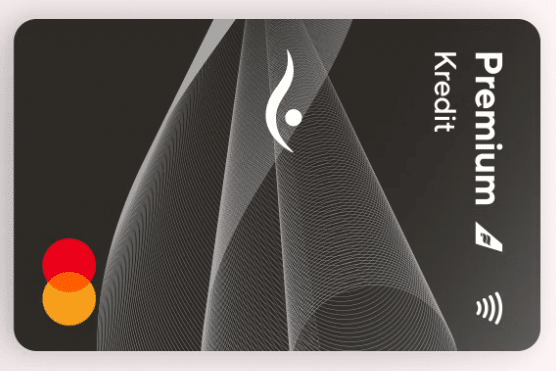Anúncios
Do you want a card for all occasions?
Iceland has a special way of handling its money policy, shaped by its economy. The Central Bank of Iceland focuses a lot on managing the currency. This method helps keep the economy stable.

Íslandsbanki Premium Icelandair
Inflation targeting is key to control inflation and make the economy steady. This piece looks into Iceland’s past and the tests it faces. Challenges like inflation and exchange rate shifts are big for a small open economy like Iceland’s.
Anúncios

Introduction to Iceland’s Economic Landscape
Iceland’s economy has changed a lot, especially with global events and policy changes. This overview talks about how Iceland’s economy works. It looks at tourism and how Iceland bounced back from big financial problems, like the 2008 crisis.
Tourism is now very important, creating jobs and helping the economy grow. It shows why keeping money stable is key for more growth. The Central Bank of Iceland is crucial in this. It works to keep prices stable and promote a good environment for growth.
Reports show Iceland’s smart economic policies help it deal with crises. They also make Iceland strong in the world economy. Understanding these things lets us see how Iceland keeps improving its economy.

The Evolution of Monetary Policy in Iceland
Iceland’s journey in shaping its monetary policy has been eventful, especially since 2001. That year, the country chose to focus on keeping prices stable. This move opened a new era in how Iceland handles its money policy. It achieved early wins in keeping inflation in check and earning people’s trust in its central bank.
The journey, however, got tougher with global financial shifts and local economic issues. The 2008 financial meltdown marked a critical point, changing how Iceland runs its monetary policy. This crisis made it clear that Iceland had to rethink its strategy to stay strong.
After facing tough times, Iceland’s monetary policy showed its strength. Experts saw how Iceland learned and adapted its money management strategies. This story of adaptation underlines the flexible nature of Iceland’s approach to monetary policy. It is a clear response to past challenges and current situations.
Iceland’s Inflation Targeting Regime
In 2001, Iceland’s Central Bank started focusing on controlling inflation to stabilize the economy. They aimed for a 2.5% inflation rate, changing how money was managed. This new plan showed good early results and made businesses and consumers expect stable prices.
Implementation of Inflation Targeting Since 2001
Implementing this strategy wasn’t always smooth. At first, Iceland’s Central Bank kept inflation under control, but then faced challenges. Sometimes inflation went above their target. Reports over the years have shown it’s crucial to keep improving the strategy to maintain stable prices.
Impact of Inflation Targeting on Economic Stability
The benefits of targeting inflation are clear, especially when looking at job numbers and investment trends. Comparing Iceland to similar countries shows how this strategy affected its economy. It teaches the value of being flexible and alert to changes in the economy, both locally and globally.
Factors Influencing Iceland’s Monetary Policy
Iceland’s monetary policy is influenced by both local and global factors. This includes how Iceland’s Central Bank responds to economic changes. The mix of worldwide and domestic issues shows the challenges they face in maintaining economic stability.
Global Economic Environment
Worldwide economic conditions greatly affect Iceland’s monetary decisions. Key outside factors are:
- Commodity Prices: Changes in global commodity prices can influence inflation and the overall economy.
- Capital Flow Trends: Shifts in how people invest affect currency value, calling for careful policy actions.
- Geopolitical Events: Political events around the world can impact trade and investments, leading to significant monetary adjustments.
Because of these global events, Iceland must be ready to change its policies to handle international risks.
Domestic Economic Conditions
Local economic factors also guide Iceland’s monetary policy. Important domestic issues include:
- Housing Market Dynamics: Changes in the housing market can lead to inflation, which needs to be managed.
- Labor Market Pressures: Employment trends and wage negotiations affect both inflation and how much people spend.
- Sectoral Performance: The health of sectors like tourism significantly impacts Iceland’s economy and its monetary policies.
Looking at these local factors helps the Central Bank craft better policies for stability and growth. Recognizing both global and local factors helps Iceland navigate the economic world more effectively.
Monetary Policy and Currency Management
The Central Bank of Iceland has a big job. It shapes monetary policy and manages the currency effectively. It works to keep the economy stable, dealing with both local and worldwide financial challenges. The bank focuses on strategies that help the Icelandic króna run smoothly and stay strong.
Role of the Central Bank of Iceland
The Central Bank of Iceland sets and carries out monetary policy. It does this by setting interest rates and managing inflation. It also takes care of the national currency to keep it stable. The bank is built on being open and independent. This ensures its choices are well thought out and based on solid data.
It also talks clearly with the public and other key people. This builds trust and helps everyone understand its actions.
Exchange Rate Management Strategies
To deal with changes in exchange rates, the Central Bank uses several strategies. It steps in the foreign exchange market and builds up reserves. These steps help calm the ups and downs and keep the króna’s value steady when the economy is shaky. The bank prefers managed floating exchange rate policies. This shows its dedication to Iceland’s economic stability while letting the market do its thing when needed.
Lessons from the Financial Crisis of 2008
In 2008, Iceland faced a big challenge. Its economy was in danger because of major bank failures. This crisis showed how important it is to learn from such events to build a stronger future.
Iceland then started to fix its economic problems. It made its rules for banks stricter and watched them more closely. This helped to avoid taking too many risks. Thanks to these changes, Iceland began to recover and its economy got better.
After the crisis, it was clear that changing how money is managed was key. This helped gain back trust and stability. The crisis taught important lessons, making Iceland’s economy stronger and more flexible.
Regulatory Changes and Their Impact on Monetary Policy
After the 2008 financial crisis, Iceland had to make big changes in its rules. These were aimed at making its money policy better and its economy stronger. The country worked hard to fix trust and stability within its financial system. Thanks to these efforts, there was a big improvement in how rules were set and followed.
Post-Crisis Reforms and Improvements
After the crisis, Iceland began a new phase by improving its institutions. Here are the main improvements:
- Restructured decision-making bodies providing increased oversight and accountability.
- Enhanced governance structures promoting clearer delineation of responsibilities.
- New communication strategies aimed at elevating public understanding of monetary policies.
- Establishment of monetary policy committees to foster collaborative decision-making.
Thanks to these changes, there’s been a noticeable improvement in managing inflation and keeping exchange rates stable. This is shown by several economic reports.
Current Monetary Policy Governance Structure
Today, Iceland’s money policy is managed through a detailed framework. This framework ensures the economy stays stable. It includes:
- The Central Bank of Iceland, which serves as the primary authority for implementing monetary policy.
- Monetary policy committees that ensure diverse perspectives in decision-making processes.
- Regular assessments and reviews aimed at fine-tuning regulatory strategies.
This setup helps Iceland tackle economic issues effectively, keeping its policy relevant in the ever-changing world.
Challenges Facing Iceland’s Monetary Policy Framework
Iceland’s monetary policy faces big hurdles. Its economy deals with changing inflation and currency values. These challenges need flexible approaches to keep things stable. They affect both Iceland’s economy and the lives of its people.
Inflation Volatility and Exchange Rate Fluctuations
The problem of changing inflation worries those in charge. Fast shifts in inflation make financial markets uncertain. This affects consumers and businesses alike. Changes in currency values add to the trouble. They make prices of imports unpredictable. This causes waves in Iceland’s economy, disrupting budgets and buying habits.
To tackle these issues, a deep understanding is needed. Policymakers must keep checking their plans. They have to see how global market changes impact Iceland. This constant review helps keep the economy stable and grow despite these ongoing challenges.
Future Directions for Monetary Policy in Iceland
The Iceland Central Bank vision highlights the need for change as the world’s economy shifts. It shows how crucial it is for Iceland to stay strong and stable. To do this, the bank suggests better ways to communicate, earning the public’s trust, and being clear with everyone.
Iceland plans to use different strategies to tackle any economic problems. These include:
- Checking inflation regularly to adjust targets as needed.
- Working closely with global financial groups to learn and apply their best ideas.
- Using comprehensive methods for regulating finance to keep the banking system stable.
The central bank aims to be ahead of the curve, focusing on growth and keeping inflation in check. Following this plan will help Iceland’s economy stay flexible and successful, no matter what the world economy does.
Conclusion
Our study of Iceland’s monetary policy shows that being flexible and strong is key to a good economy. Iceland has shown it can change its monetary policies to handle challenges both locally and worldwide. This approach helps keep the economy stable.
The future of Iceland’s economy relies on improving its monetary strategies. It’s important for policymakers to build strategies that solve current problems and also prepare for new ones. This means constantly updating and creating new plans to support growth and strength in the economy.
Learning from past events, like the 2008 financial crisis, is crucial for Iceland. These lessons help the country build a strong economic base. This way, Iceland can handle future issues better and stay strong in the world economy.


